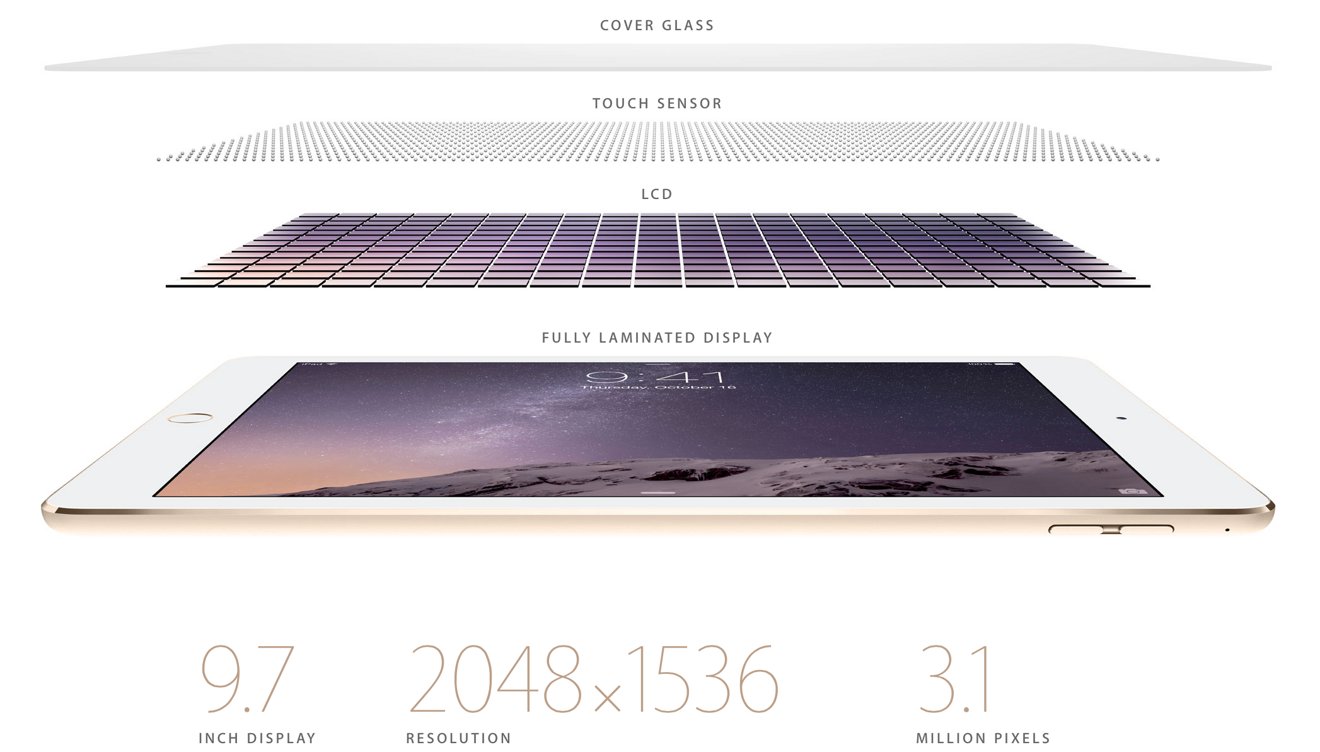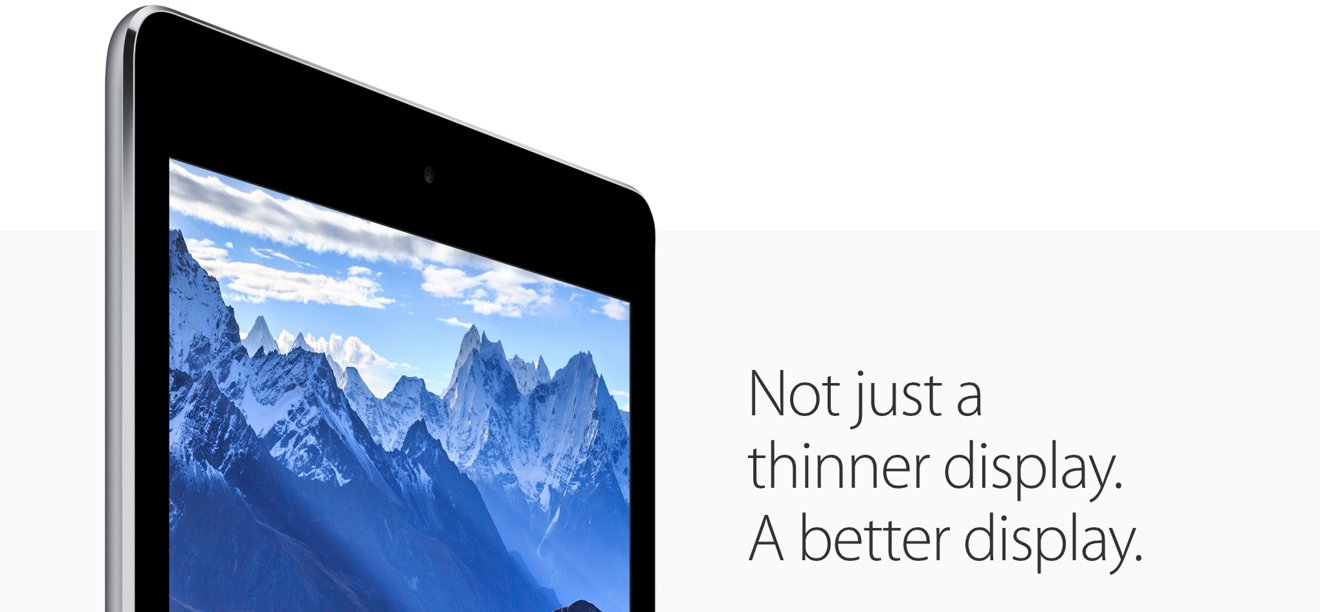iPad Air 2 glass cover has 2.5% screen reflectance vs. 8% reflectance for sapphire
Apple fans still hoping the company will adopt a scratch-resistant sapphire cover for the iPhone in the near future should temper their expectations, as one display expert believes the impressive anti-reflective glass coating on the iPad Air 2 display is instead the way of the future.
In a new commentary, Raymond Soneira of DisplayMate Technologies noted that the new anti-reflection screen on Apple's iPad Air 2 has a screen reflectance level of just 2.5 percent. He said that's by far the lowest level he has ever measured on a tablet or smartphone, with previous record holders not able to beat around 4.5 percent.
The display expert said he doesn't expect Apple to utilize sapphire in future iPhone screens because the material by itself has a very high 8 percent reflectance rate. If Apple were to put the same anti-reflective coating found on the iPad Air 2 onto a mythical sapphire iPhone, it would defeat the purpose of the sapphire by placing a softer coating on top that is more susceptible to scratches.
In short, a sapphire cover with an anti-reflectance coating would lose main selling point over traditional glass: superior scratch resistance.
"Anti-reflection coatings are used in just about all high-end lenses and related optics," Soneira explained. "The problem is that most coatings scratch easily and show fingerprints easily. Apple (or more likely one of its suppliers) has found something that doesn't scratch easily or show fingerprints and works well on tablet and smartphone touch screens."
Soneira's tests show that the lower reflectance rate on the iPad Air 2 improves screen readability, image contrast, and color saturation in ambient light by a margin of nearly two to one over its predecessor.
Rumors of sapphire screens from Apple came about after the company signed a $578 million contract with GT Advanced Technologies, a maker of advanced sapphire material. Apple uses sapphire to protect the Touch ID fingerprint sensors found on the iPhone and iPad, as well as the rear iSight camera on some devices.
The deal with GTAT fueled hopeful speculation that the iPhone 6 would feature a scratch-resistant sapphire display, eschewing the Gorilla Glass that Apple has used up until now. But those wishes didn't pan out, and Apple's deal with GT Advanced collapsed earlier this month when the company filed for bankruptcy.
In addition to Soneira's notes about reflectance and scratch resistance made Tuesday, AppleInsider also noted back in June that sapphire was an unlikely candidate for the entire display of an iPhone or iPad. In addition to being costly and allowing less light to travel through, larger pieces of sapphire are also prone to shattering when dropped, and is harder to work with in the manufacturing process.
 Neil Hughes
Neil Hughes












 Andrew Orr
Andrew Orr
 Malcolm Owen
Malcolm Owen

 William Gallagher
William Gallagher

 Mike Wuerthele
Mike Wuerthele
 Christine McKee
Christine McKee







